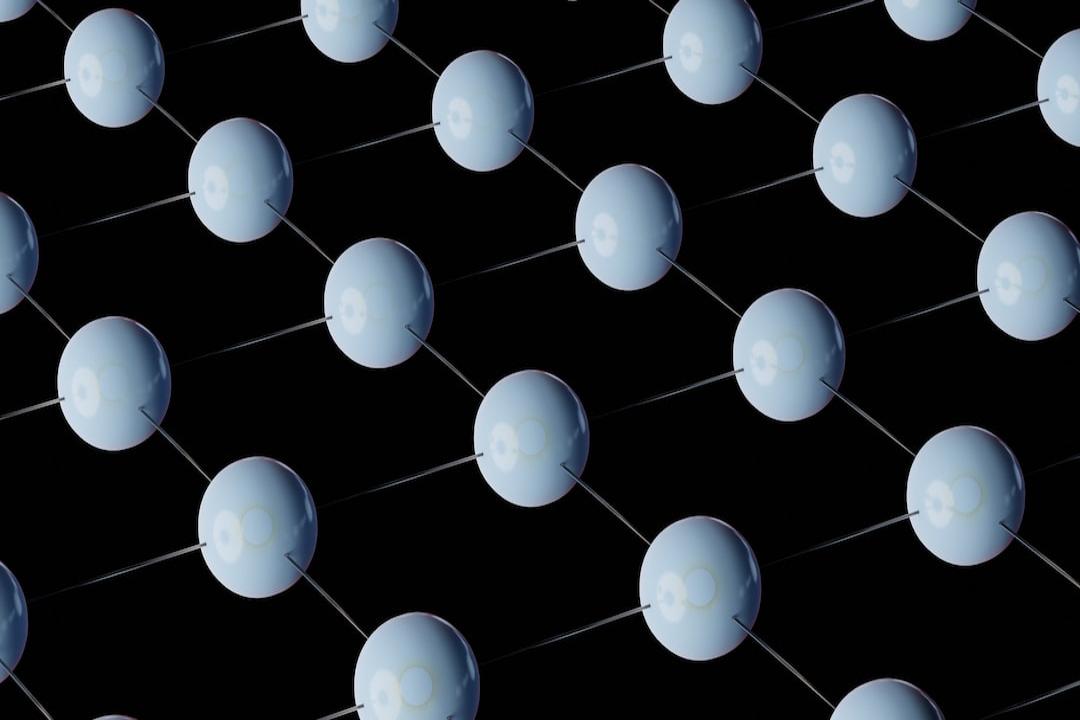Through the optimization of Rollup, Mode Network greatly improves the transaction efficiency and scalability of Ethereum, providing users and developers with a faster, more economical, and more scalable platform.
Summary:
Detailed Analysis of Mode Network, a Popular OP Super Chain Project.
Background:
Comparing Arbitrum, Optimism, and zkSync: What are the Advantages?
Table of Contents:
Core Mechanism
Optimistic Rollups
Principle and Mechanism
Features and Advantages
Sequencer Fee Sharing
Concept of Sequencer Fee
Fee Sharing Mechanism
Advantages and Impacts
Modularity and Collaboration Model
Modular Architecture
Collaboration Model
Mode Network Bridge
Functionality and Operation Principle
Security Features
User Experience
Application Scenarios
Ecosystem
Economic Model
Developers and Applications
Community and Collaboration
Governance
Online Ecosystem Projects
MODE Token
Usage and Functionality
Supply/Distribution Ratio
Airdrop
Overview of Airdrop
Methods to Earn Airdrop Points
Maximizing Airdrop Points Strategy
Team/Funding Situation
Project Evaluation
Track Analysis
Project Advantages
Project Disadvantages & Challenges
Conclusion:
Mode Network is a modular Layer2 network focused on the DeFi track, built on the Optimism Bedrock upgrade. It supports the fast development and deployment of Ethereum Virtual Machine (EVM) compatible decentralized applications (DApps), and reduces transaction costs by 95%.
Mode Network is known for its innovative revenue-sharing model, aiming to empower developers and users to build a world-class application ecosystem and directly receive rewards through recommended and contract-protected income. By distributing sequencer revenue to reward developers and users, it not only increases the decentralization of DeFi but also allows more people to benefit from network activities.

The “Optimistic Rollup” technology used by Mode Network is a Layer 2 scaling solution designed to increase Ethereum’s scalability and reduce transaction costs. This technology achieves this by running an independent execution layer on top of the Ethereum mainnet, significantly improving transaction processing speed without compromising security. Here is a more detailed explanation of the Optimistic Rollup technology used in Mode Network:
1. Batch Processing:
Optimistic Rollup combines multiple transactions into a batch and submits the data of these transactions to the Ethereum mainnet all at once. This method reduces the need for each transaction to undergo independent state transition and verification, thereby reducing transaction costs.
2. Delayed Confirmation:
In Optimistic Rollup, once a transaction is included in a batch, it is immediately confirmed on Layer 2 without waiting for confirmation on the Ethereum mainnet. This provides a fast transaction experience. However, the ultimate validity of these transactions still relies on subsequent verification on the mainnet.
3. Fraud Proof:
Optimistic Rollup relies on an “optimistic” assumption that all transactions and batch processing are conducted honestly. If someone believes that a batch contains fraudulent behavior, they can submit a fraud proof to challenge the batch. If the challenge is successful, the fraudulent batch will be revoked, and the related transactions will be rolled back.
4. Rollback and Security:
Optimistic Rollup provides an additional security layer because all transactions must ultimately be settled on the Ethereum mainnet. This means that even if errors or malicious behavior occur on Layer 2, they can be corrected on the mainnet, ensuring the security of funds.
Scalability:
By executing transactions on Layer 2 and only sending batch data to the mainnet, Optimistic Rollup significantly reduces the demand for Ethereum mainnet resources, improving the overall scalability of the network.
Cost Efficiency:
By reducing the number of transactions that need to be directly processed on the Ethereum mainnet, it significantly reduces transaction costs for users.
User Experience:
It provides near-instant transaction confirmation, improving the user experience, especially for applications that require fast transaction confirmations, such as exchanges or games.
Compatibility:
Optimistic Rollup technology supports Ethereum Virtual Machine (EVM), allowing developers to seamlessly migrate existing Ethereum applications to Mode Network.
The sequencer fee-sharing mechanism of Mode Network is an important part of the network’s core economic model, aiming to incentivize developers to build and maintain applications on the platform while increasing user participation.

This mechanism is achieved through the following key features:
In Layer 2 solutions using Optimistic Rollup technology, the sequencer is a critical role responsible for collecting and ordering transactions in the network and then submitting them to the Ethereum mainnet in batches. This process requires paying fees to the Ethereum mainnet, but due to the batch processing of transactions, the average cost per transaction is significantly reduced. As a result, the sequencer generates income in the network, primarily from transaction fees paid by users.
1. Income Allocation:
Developer Incentives: Mode Network has established a mechanism that allows developers to receive a portion of the sequencer’s income by registering their smart contracts with specific fee-sharing contracts. This practice encourages developers to build and maintain high-frequency trading applications because these applications can generate more transactions and thus bring more sequencer income.
User Rewards: A portion of the sequencer’s income is also used to reward network users, especially those who bring in new users through referrals. This referral mechanism encourages existing users to promote the network, helping it increase user base and activity.
2. Contract Registration:
Developers must associate their smart contracts with fee-sharing contracts to benefit from them. This usually involves including specific code snippets when programming contracts to ensure that transactions can be correctly tracked and reward distributions can be made.
3. Transparency and Automation:
The specific ratio and allocation rules of fee sharing on Mode Network are transparent and executed through smart contracts, ensuring the fairness and transparency of operations. This automated allocation mechanism reduces potential disputes and enhances trust in the network.
Incentivizing Innovation:
By providing financial incentives to developers, Mode Network encourages more developers to participate and innovate, bringing more diverse applications.
Increasing Activity:
The user incentive mechanism increases user participation, making users more inclined to use and recommend Mode Network, thereby enhancing network activity and expansion.
Ecosystem Growth:
With the emergence of more high-quality applications and an increasing user base, the entire ecosystem can grow rapidly, enhancing the overall value and attractiveness of the network.
The modularity and collaboration model of Mode Network are core components of its blockchain architecture and operational strategy. This design aims to enhance the network’s flexibility, scalability, and user participation. By implementing these strategies, Mode Network aims to build a versatile, efficient ecosystem that supports diverse application development and promotes collaboration among stakeholders. The following is a detailed introduction to Mode Network’s modularity and collaboration:
1. Definition and Purpose:
Modularity in blockchain refers to breaking down network functionality into independent components or modules, with each module responsible for specific tasks. This design allows for more flexible development and maintenance, while also enabling the network to better adapt to changing technological and market demands.
2. Implementation:
Consensus Layer: Mode Network may adopt independent modules to handle transaction validation and consensus mechanisms, ensuring network security and integrity.
Execution Layer: Modular layer for executing smart contracts and processing transactions, optimizing resource utilization and improving processing speed.
Data Layer: Independently handles data storage and access to improve efficiency and scalability.
Interaction Layer: Responsible for interfaces with users and external systems, such as APIs and front-end interfaces, ensuring a good user experience and system interoperability.
3. Advantages:
Flexibility: Modularity allows for quick adjustments or upgrades to individual parts of the network without affecting other modules.
Maintainability: Each module is independent, making it easier to manage and optimize, reducing potential system errors and security risks.
Scalability: Certain modules can be individually expanded as needed, without the need to restructure the entire network.
Collaboration Ecosystem:
Mode Network encourages and supports collaboration among various stakeholders, including developers, users, investors, and partners, to jointly promote the development and value of the network.
Incentive Mechanisms:
Developer and User Incentives: By distributing network revenue (such as sequencer fee sharing), providing development funding support, and organizing competitions, developers are incentivized to innovate, and users are incentivized to participate.
Partner Incentives: Establishing partnerships with industry partners to develop solutions together, share resources, and market opportunities.
Governance Model:
Decentralized Governance: Mode Network may adopt a decentralized governance model, allowing network users and developers to participate in the decision-making process, such as determining key network upgrades and policy changes through token voting.
Transparent Communication: Regularly disclose project progress and financial status to maintain internal information transparency and open communication channels within the ecosystem.
Technical Collaboration and Integration:
Standardized Interfaces: Providing standardized programming interfaces (APIs) to allow easy integration of third-party applications and services into Mode Network.
Cross-Chain Interoperability: Developing support for interoperability with other blockchain technologies, expanding Mode Network’s application scope and market acceptance.
Mode Network Bridge is a key component provided by Mode Network in its Layer 2 solution, allowing users to efficiently and securely transfer assets between the Ethereum mainnet and the Mode Layer 2 network. The main purpose of this bridge is to simplify cross-chain operations for users while maintaining a high level of security and lower transaction costs.

Here are detailed descriptions of Mode Network Bridge:
1. Asset Transfer:
Mode Network Bridge enables users to transfer cryptocurrencies such as Ethereum (ETH) and other ERC-20 tokens from the Ethereum mainnet to Mode Network. This transfer is achieved by locking the assets on the mainnet and issuing an equivalent amount of tokens on Mode Layer 2, maintaining a balance of assets on both sides.
2. Two-Stage Operation:
Deposit: Users first deposit assets from the Ethereum mainnet into the bridge’s smart contract. Once the deposit is confirmed, an equal amount of tokens will be minted on Mode Layer 2 for users to use.
Withdrawal: When users want to withdraw assets from Mode Layer 2 back to the Ethereum mainnet, the corresponding Layer 2 tokens will be burned, and the mainnet smart contract will release an equivalent amount of assets to the user.
3. Optimized Transaction Costs:
By centrally processing cross-chain transactions, Mode Network Bridge significantly reduces transaction fees for users when performing cross-chain fund transfers. This is achieved by batch processing transaction confirmations on Layer 2 and utilizing Optimistic Rollup technology to reduce the demand for Ethereum mainnet resources.
Smart Contract Security:
Mode Network Bridge uses thoroughly tested and audited smart contracts to handle asset locking and release, ensuring transaction security and fund safety.
Decentralized Trust:
While the bridge relies on smart contracts, Mode Network may adopt additional security measures such as multi-signature or decentralized trust mechanisms to further strengthen the security of cross-chain transactions.
Simplified Interface:
Mode Network Bridge is designed with a user-friendly interface, making cross-chain operations simple and intuitive, even for non-technical users.
Fast Transfers:
Transfers through the bridge can be completed faster compared to direct transactions on the Ethereum mainnet, as it leverages the efficient processing capabilities of Layer 2.
DeFi Integration:
Users can quickly transfer assets to Mode Network using Mode Network Bridge to participate in various DeFi applications such as lending, trading, and liquidity mining.
Cross-Chain Interoperability:
The bridge serves not only between Ethereum and Mode Network but theoretically allows for interoperability with other blockchain technologies, expanding Mode Network’s application scope and market acceptance.Mode Network can expand its ecosystem by connecting to other compatible blockchain networks, enhancing the interoperability of the entire ecosystem.
The ecosystem of Mode Network is built around its Layer 2 solution, aimed at improving the scalability and efficiency of Ethereum while reducing user costs.
The design of its ecosystem emphasizes innovation, collaboration, and user participation and includes several key elements:
– Fee-sharing mechanism: The network allocates a portion of transaction fees to developers and users through a sorter fee-sharing mechanism. This mechanism encourages developers to build and maintain applications on the platform and incentivizes users to recommend new users to join the network.
– Incentive measures: These include airdrops, reward programs, and referral rewards to increase the attractiveness of the network and user activity.
– Developer support: Mode Network provides comprehensive developer support, including documentation, development tools, and software development kits (SDKs), making it easy for developers to build and deploy applications on the network.
– DApps ecosystem: The ecosystem includes existing or under development DApps such as decentralized exchanges (DEXs), lending platforms, games, and other financial tools. These applications leverage Mode’s low cost and high efficiency advantages to provide users with diverse services.
– Community-driven: Mode Network promotes community-driven development through community voting and feedback mechanisms, allowing users to directly participate in network governance and decision-making processes.
– Partnerships: Mode Network collaborates with other blockchain projects, development teams, and enterprises to expand the functionality and service scope of its ecosystem.
– Decentralized governance: Mode Network adopts a decentralized governance model that allows token holders to vote on key network upgrades, fund usage, and policy changes.
– Transparency: By regularly releasing updates and financial reports, Mode Network maintains transparency in the operation of its ecosystem, enhancing community trust and participation.
Mode Network’s ecosystem is rapidly expanding, particularly in the DeFi field. Several key projects on the platform have already been launched, each showcasing unique features and market positioning. These projects include:
– Ether.fi: A liquidity repledging protocol based on Ethereum that allows users to repledge ETH or other assets to generate LRT tokens and obtain eETH. It leads in the liquidity repledging track with a TVL of $2.67 billion.
– Renzo: Another liquidity repledging protocol that supports users’ repledging of assets to earn LRT tokens, which can be exchanged for ezETH at a 1:1 ratio. It ranks third in the same track with a TVL of $990 million.
– IONIC: A lending protocol aimed at providing the best lending rates and designed to balance the interests of borrowers and lenders. It has a TVL of $61 million and has received support from MetaCartel Ventures, Ohm, and Mode.
Governance: MODE tokens allow holders to participate in network governance, voting on key network upgrades and governance proposals.
Incentive programs: Used to encourage user and developer participation in various activities within Mode Network, such as development contests and user engagement events.
DeFi and community sponsorship: MODE tokens support integrated DeFi activities and community sponsorship, supporting the development of projects and community events within the network.
Ecosystem development: MODE tokens are used to support the expansion and enhancement of the entire Mode ecosystem, including funding new projects and partnership relationships.
Airdrops: 35% of MODE tokens are allocated for user and developer airdrop activities to encourage community participation and contributions.
Investors: 19% of MODE tokens are allocated to early investors for initial capital and development support.
Core team: 19% of MODE tokens are allocated to core contributors and team members to incentivize their ongoing work and contributions.
On-chain platform and treasury: 27% of MODE tokens are reserved in on-chain platforms and treasuries to support the long-term development and operation of the project, as well as potential future funding needs.
Total supply: 10 billion MODE tokens.
Initial circulating supply: 1.3 billion MODE tokens.
Token distribution: Mode Network will distribute a total of 550 million MODE tokens through airdrops, with 400 million tokens allocated for airdrops.
Airdrop purpose: The airdrop aims to encourage early participants and incentivize developers and users to contribute to the ecosystem.
1. Asset bridging: Assets such as ETH, USDT, USDC, or WBTC can be bridged from the Ethereum mainnet to Mode Network. The longer the bridged assets are held on Mode Network, the more rewards can be earned. During the first seven days of the activity, bridging will receive a 12x point bonus.
2. Invite friends: By referring friends to participate, users can receive a 16% reward of the points earned by the referred users.
3. Use DApps: By interacting with designated decentralized applications (DApps) such as Eigenlayer, RenzoProtocol, Layerbank, Ionic, and Etherfi, users can earn double points. These DApps may involve various interactions such as trading, staking, and lending.
Point optimization techniques: Maximizing point earnings by performing asset operations, such as staking, borrowing, and exchanging, in multiple DApps within Mode Network.
Exchange strategy: For example, exchanging ETH for EZETH on Kim Exchange, using EZETH for staking and borrowing on Layerbank, and depositing EZETH on Ionic to earn more points.
Mode Network’s team is led by two key leaders, James Ross and Federico Sarquis, who have deep industry experience and extensive network resources.
James Ross: Founder, graduated from the University of Sussex with a degree in Economics and Philosophy. He has served as an advisor at Hashflow and has invested in Eigenlayer and Ethena.
Federico Sarquis: CTO, organized activities for Ethereum Argentina and has rich technical and community experience.
The team consists of 15 members and adopts a remote work mode, enhancing operational flexibility and global collaboration capabilities. This structure helps to quickly respond to market changes and technological advancements.
Regarding funding, in October 2020, Mode Network completed a $9.75 million financing round. In addition, the project received a grant of up to 2 million OP tokens from the Optimism Foundation to support user growth incentives.
In April 2024, a seed funding round was also completed, led by KR1, with an unknown amount.
Mode Network belongs to the Layer 2 solution track, focusing on improving transaction speed and reducing costs by building a Layer 2 network on top of Ethereum while maintaining security and compatibility with the Ethereum mainnet.
Similar projects in the same track as Mode Network include:
1. Optimism: Optimism is a Layer 2 scaling solution that uses Optimistic Rollups technology to improve Ethereum’s scalability and reduce transaction fees. It reduces fees by delaying the availability verification of transactions and increases transaction throughput.
2. Arbitrum: Arbitrum is another Layer 2 solution that utilizes Optimistic Rollups technology. It reduces fees by executing transactions off-chain and only submitting result data to the Ethereum mainnet.
3. Polygon: Polygon (previously known as Matic Network) is a Layer 2 solution based on a multi-chain architecture. It provides a multi-chain system to address Ethereum’s scalability issues. It offers various Layer 2 solutions such as sidechains, zk-rollups, and Optimistic Rollups, allowing developers to choose the most suitable scaling solution according to their needs.
Since its launch, Mode Network has steadily increased its Total Value Locked (TVL). As of March 19, 2024, it ranks 13th in TVL among all Layer 2 networks with $162 million. The average daily transactions per second (tps) is 1.62, and the median GAS price is 0.001 Gwei, which translates to less than $0.01 in actual cost. There have been a total of 2.12 million transactions in the past 30 days.
Mode Network has several technical advantages:
– Application of Optimistic Rollups technology: Mode Network uses Optimistic Rollups technology to improve transaction speed and reduce costs. This technology processes transactions on Layer 2 and only submits batch transaction data to the Ethereum mainnet, significantly reducing the burden on the mainnet while ensuring transaction security and integrity.
– Modular architecture: Mode’s modular design allows developers to choose and integrate features according to their needs. This flexibility makes Mode Network suitable for various applications, from simple payment systems to complex financial products.
However, Mode Network also faces challenges:
– Market competition: Mode Network competes in the crowded field of Layer 2 solutions. It needs to compete with other established solutions such as Polygon, Arbitrum, Optimism, and zkSync, which have solid user bases and wider market recognition.
– User and market acceptance: User migration and adoption may be influenced by existing habits and platform dependencies. Users may need time to evaluate and adapt to new platforms.
– Economic and funding risks: Mode Network’s development and expansion heavily rely on external funding. Market fluctuations or a decrease in investor confidence may affect its fundraising ability. Additionally, fluctuations in token value may impact the stability and attractiveness of the project.
In summary, Mode Network is an innovative Layer 2 solution aimed at significantly improving Ethereum’s transaction efficiency and scalability through its Optimistic Rollups technology. With its technical advantages and market strategy, Mode Network aims to become a key driving force for the growth of the Ethereum ecosystem, providing users and developers with a faster, more cost-effective, and scalable platform. With the continuous progress of blockchain technology and the maturation of the crypto market, Mode Network envisions playing an important role in the future development of blockchain, driving the entire industry forward.


